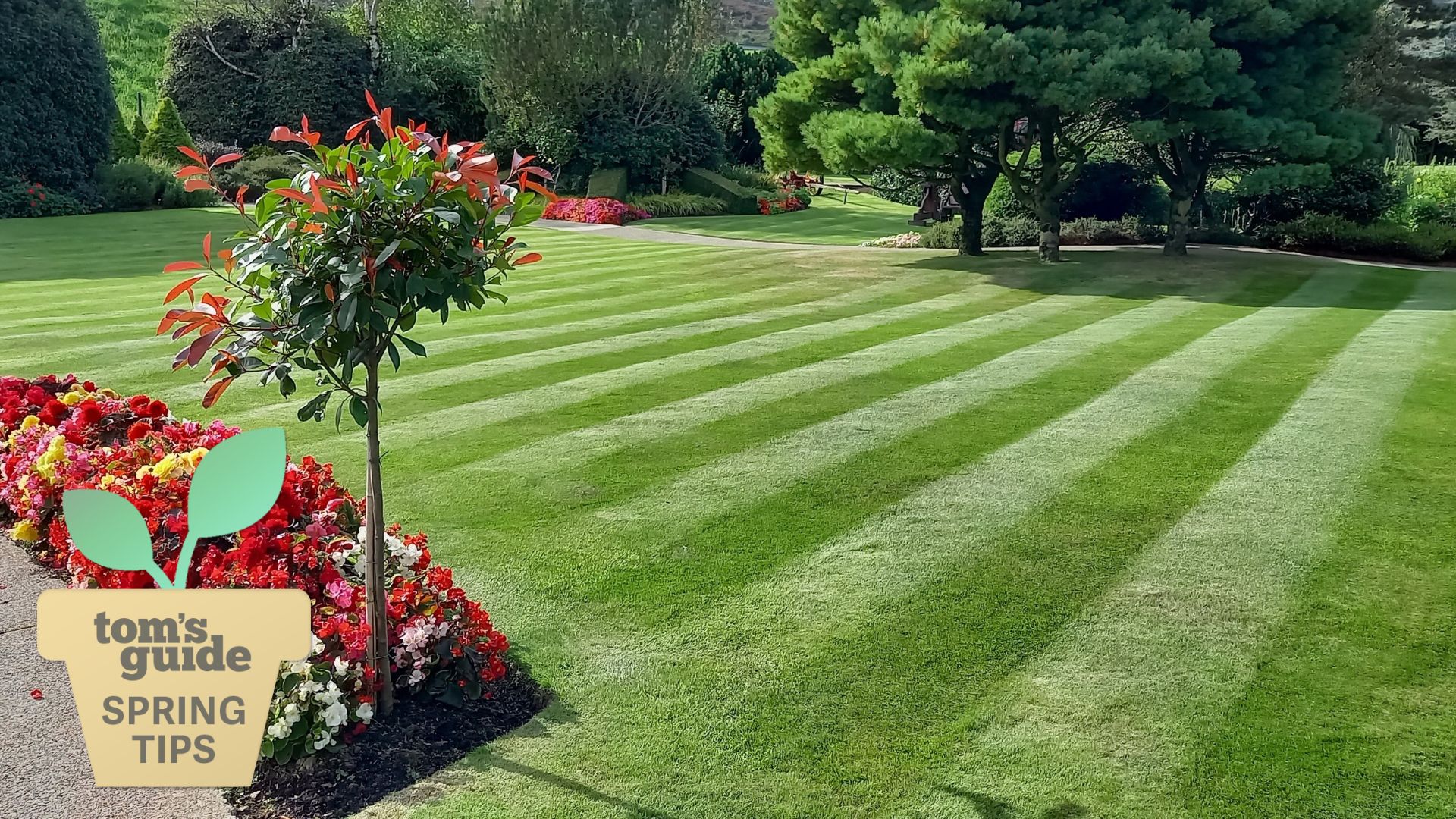I asked an MLB Field Manager how to get the perfect lawn stripes — here are his top 5 tips
How to achieve those lawn stripes, and make them stand out.

You'd be forgiven for thinking that achieving a pristine striped lawn is too tricky for an amateur, especially if you're prone to making common lawn care mistakes. In fact, knowing how to recreate that sports field look all boils down to a few handy techniques.
There are few things more satisfying than a perfectly maintained lawn. Putting in just a few hours can make you the envy of your street, and this iconic look is surprisingly straightforward to maintain.
Even though you don't need to be a pro to master the art of lawn stripes, it can't hurt to learn from the best. We spoke to Steve Peeler, Internal Agronomist of Simple Lawn Solutions and a Field Manager for several MLB teams, for his expert advice on how to stripe your lawn.

Steeve Peeler is a Turfgrass Industry Expert and Agronomist for Simple Lawn Solutions. Fueled by a passion for baseball ignited during his first MLB game in Atlanta, Steve knew early on that he wanted to dedicate his life to the sport.
Armed with a Turfgrass Management AAS from CVCC, he has served as the MLB Head Groundskeeper/Sr. Field Manager for the Chicago White Sox Affiliate, Hickory Crawdads, and subsequently climbed the ranks to become an MLB Head Groundskeeper/Sr. Field Manager for esteemed teams like the St. Louis Cardinals, Seattle Mariners, Pittsburgh Pirates and Atlanta Braves.
How to achieve professional-looking lawn stripes
Your first stripe is the most important

Although satisfying when done right, the precision of lawn stripes means it's easier to notice when you've gone off-course.
"I always place a string from the starting point to where I want the first stripe to go," says Steve. "Pulling the string tight, I mow my first pass while keeping the line centered with my lawnmower."
Keep your grass longer
It's also important to make sure that you don't cut your grass too short. This will make your stripes less visible as your grass is less able to catch the light. It's better to keep it a little too long and be able to go over your work later than put in the hours when mowing only to find that your yard is patchy, or your stripes unnoticeable.
Apart from striping, if you don't leave your grass long enough, it could lead to other problems in your yard. Here's 9 signs that you're cutting your grass too short.
Sign up to get the BEST of Tom's Guide direct to your inbox.
Get instant access to breaking news, the hottest reviews, great deals and helpful tips.
Use the right type of lawnmower
Your mowing direction is what determines that striped effect. Although you can buy cylinder mowers which will cut your grass in the direction you're mowing in, most people own rotary mowers, which feature a rotating blade.
If you do happen to have a rotary lawnmower, this doesn't mean you can't achieve great lawn stripes. Many modern lawnmowers feature an in-built rear roller which will pull your grass in your mowing direction once it's been cut, meaning it will still bend in your desired direction.
Use color to make your stripes stand out

Knowing how to make your grass greener is key to creating a vibrantly striped lawn. The striped effect is enhanced when your lawn is healthy, with the different directions of your stripes catching the sunlight at different angles.
When I asked Peeler what products he'd recommend to create perfect lawn stripes, he recommended "applying Simple Lawn Solutions 6-0-0 and Darker Green. These products will give a deep green color and make the stripes stand out more." Alternatively, you can use other fertilizer that's high in nitrogen, though you may want to add lime to your yard first.
If you did want to go the extra mile in creating a vibrant striped lawn, "one trick is to apply these products, but alternate stripes," Peeler told me. "This can be challenging, but it does create a very distinct light and darker color adjacent to one another."
Overlap your stripes

"Once the first line has been mowed, I can overlap the original stripe by quarter width," said Steve.
"For the first mowing of the season, I string every stripe so that it is in perfect alignment throughout the entire mowing area." Putting in this extra time for your first mow of the season will set the groundwork for a perfectly dimensioned stripe. This makes it easier to maintain throughout the summer months.
More from Tom's Guide

Millie is the Senior Home Editor at Tom's Guide. She's been reviewing home tech for over five years, testing everything from coffee makers to the latest vacuum cleaners. Starting out in 2019 as a Staff Writer at TopTenReviews, Millie then moved on to Future's Homes portfolio, where she eventually oversaw all product testing as Head of Reviews.
With particular expertise in cookware and kitchen appliances, you'll struggle to find an air fryer Millie's not tested. She's traveled the world reporting on the latest home innovations and product launches, learning how to use pizza ovens from Pizzaiolos in Naples, and touring the De'Longhi factory in Venice.
When she's not reporting on home and appliance trends, Millie loves watching live music. She's currently learning the guitar - naturally, she plays a Fender.
